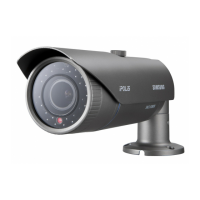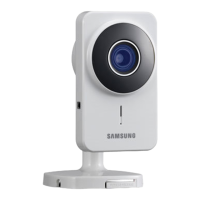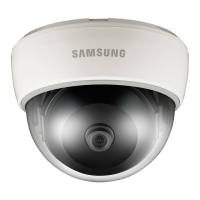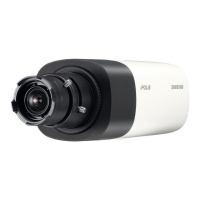setup screen
62_ setup screen
To make recording on the SD memory
1. Check the <Total size> and the <Free size>.
2. If the SD memory has a sufficient free space, set <Record> to <On>.
Otherwise, check the stored data and if you find them not important, then click
<Format> to format the SD memory.
If your SD memory card writes slowly, only one frame per second will be stored.
For a SD memory card with a large capacity, the formatting will be slowed down accordingly.
If the size of data grows with time, only 1 fps can be stored even if you set the record quality to Full
Frame.
3. Specify the record conditions.
• Record profile : Display the number of profile to record.
• Record 1 fps forcibly : Only one frame per second will be recorded regardless of
the existing record profile.
- For H.264, it will be enabled only if the bit rate is less than 4800 kbps.
- For MJPEG, it will be enabled only if the resolution is less than 800x600.
• Overwrite : If the SD memory is full, this will delete old data and store new data in
replacement.
• Pre-alarm duration : Specify the time point before the occurrence of the alarm;
starting from the time point, the images will be transferred. You can specify up to
5 seconds before the occurrence of the alarm.
• Post-alarm duration : Specify the time point after the occurrence of the alarm; to
the specified time point, the images will be transferred. You can specify up to 120
seconds after the occurrence of the alarm.
4. When done, click [Apply (
)].
Alarm input
You can set the alarm input type, activation time, and operation mode.
1. From the Setup menu, select the
<Event (
)> tab.
2. Click <Alarm input>.
3. Specify an input device.
• Type
- Normal Open : It is normally open,
but if it is closed, an alarm will be
triggered.
- Normal Close : It is normally
closed, but if it is open, an alarm
will be triggered.
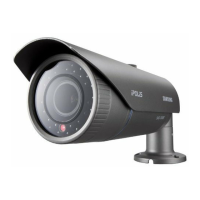
